Just imagine a small creature that has the most powerful jaws to munch on crabs! It is olive ridley sea turtle.
They can swim thousands of miles, suddenly gather themselves in millions, and rush to the beach. But do not be fooled by their small size. Because, whether you believe it or not, olive ridley sea turtles are the most abundant sea turtle in the world.
If you want to know more about their mysterious world, I am here to introduce it to you.
All About Olive Ridley Sea Turtle [Reference]
The scientific name of this small head creature is Lepidochelys Olivacea. Along with having front and rear flippers like 1 or 2 visible claws. This turtle also has an extra claw on the front flippers.
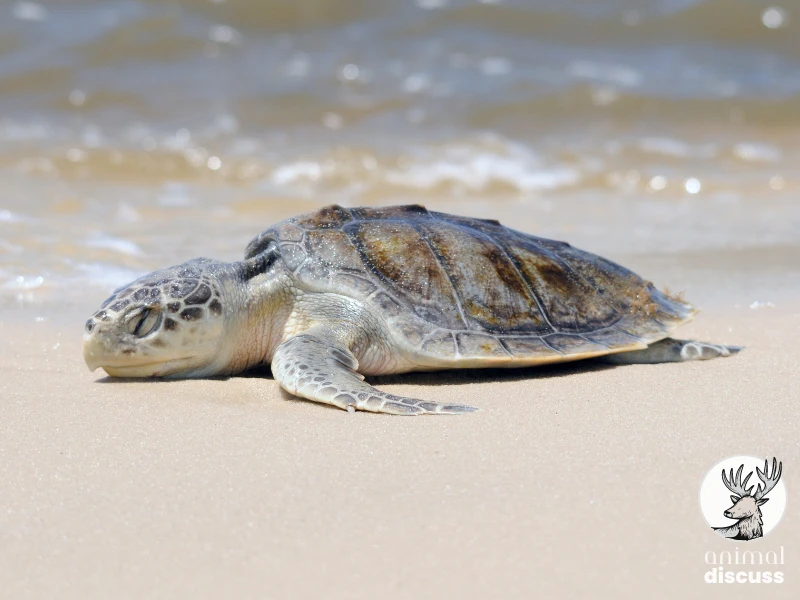
Olive ridley sea turtles mostly grow up to 2.5 feet and their weight can be about 100 pounds. Where, the largest sea turtle- “the leatherback turtle” can grow more than 1500 pounds.
Though the olive ridley turtles are small, a large number of these turtles live in the ocean. About 800,000 females are living worldwide. Still, when it is compared to the historic abundance this number is pale.
It’s because more than ten million olive ridley sea turtles used to live only in the Pacific Ocean. That is because people started to harvest them for eggs, meat and skin.
Now have a look at the other features of this beautiful creature in the table below –
| Features | Facts |
|---|---|
| Scientific name | Lepidochelys Olivacea |
| Family | Cheloniidae |
| Class | Reptilia |
| Communication way | They use vocalization, touch and body language to communicate with each other |
| Body Shape | Heart-shaped carapace |
| Ears | Has an internal ear |
| Beak | Sharp beak to prey on any lobsters, crabs, etc. |
| Size | 2-2.5 feet |
| Average lifespan | Up to 50 years |
| Weight | 80-100 pounds |
| Egg production | Lays clutches of 100-120 eggs approximately |
| Tail | Adult male’s tails are different from the female tail |
| Color | Olive/grayish-green color |
| Diet | Omnivores |
| Swimming speed | 2.8 to 10 km/h |
| Mating Life | Mates are made in water by internal fertilization |
| IUCN status | Vulnerable |
Habitat of Olive Ridley Sea Turtles
Now you can have the question in your mind where do the olive ridley sea turtles live? I am here to answer this.
Olive ridley sea turtles are mostly found in the subtropical and tropical regions of the world. This includes the Atlantic, Pacific, and Indian oceans. They choose these types of oceans because they prefer warm water rather than cold one.
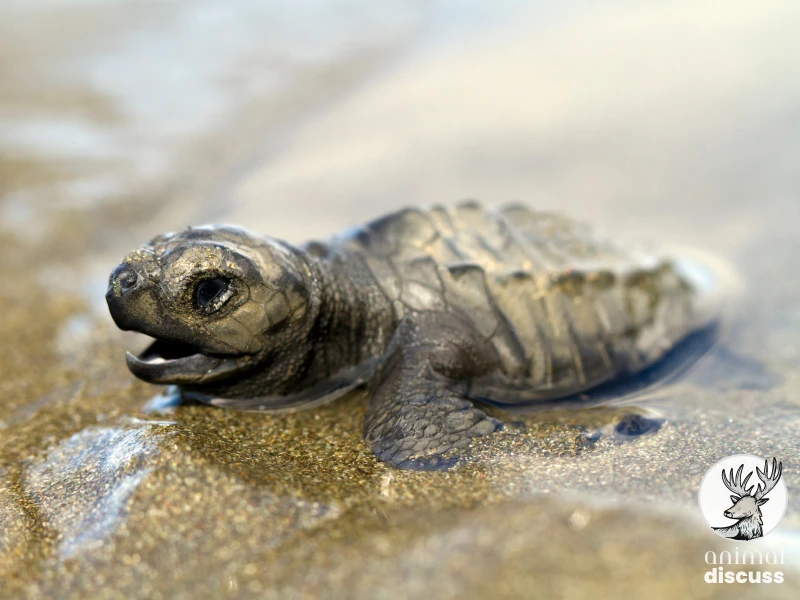
Although they spent extensive amounts of time in the open ocean, they also have a connection with the coastal region. Mainly they go there to carry out some essential tasks. This includes:
Nesting: The female olive ridley sea turtle goes to the coastal areas to perform two types of nesting. One is solitary nesting, and the other one is arribadas. Arribada means synchronized mass nesting.
And nesting females go to the same beach from where they hatch to lay their eggs. They lay eggs in conical nests that are approximately 1.5 feet deep. This nest is dug carefully using their hind flippers.
Not only that, but the olive also ridley sea turtles are a bit adaptable to any type of change. Though these creatures are seen in both coastal and tropical regions in over 80 countries, very little migration is noticed in them than the other species of turtles.
Nevertheless, if they do migrate, their ability to adapt and their flexibility allow them to utilize their range of habitat for a short period of time. Like surviving in the cold temperate water.
For more information about their habitat, you can read “Olive Ridley Sea Turtle Habitat.
What Does the Olive Ridley Sea Turtle Eat?
Now that you know all about an Olive Ridley Sea Turtle, let’s explore what they have in their diet.
Olive ridley sea turtles have powerful jaws. This allows them to have an omnivore diet, which means they can eat both animals and plants. But there is variation in diet depending on their age and location.
In the early stage of life, the young olive ridley sea targets ready food in shallow water. Like tunicates, jellyfish, shrimp, lobsters, crabs, etc. At this stage, they get all the nutrition they need from these foods for their rapid growth.
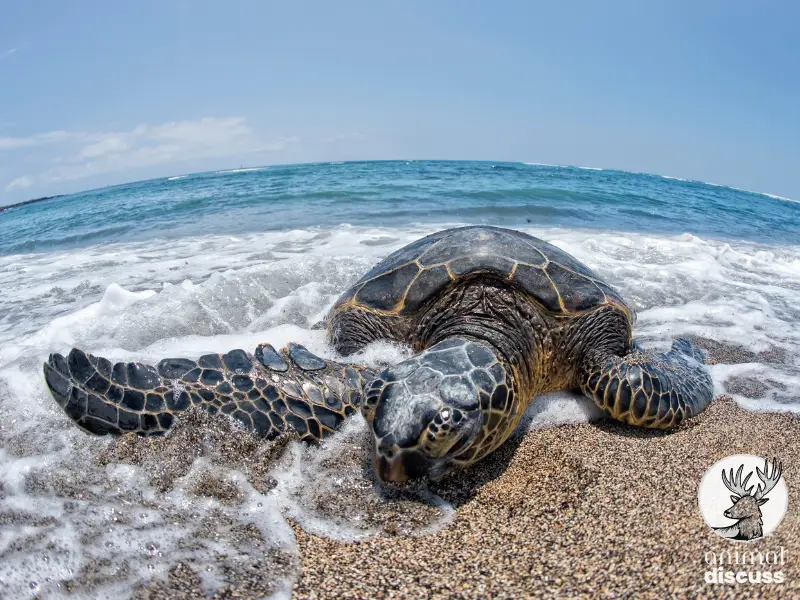
But when the little turtles become mature, their diet expands. They start to become more adventurous to incorporate with the wider variety. This time their menu includes like before and includes fish and fish eggs along with the algae.
However, have you ever thought about the slowest animal who slowly moves in the land, and can dive so deep in the ocean? No right? But Olive ridley sea turtles are skilled divers who are capable of diving deep in the oceans. They can dive up to 500 feet means 150 meters in order to forage food from the seabed.
Their diving skills allow them to access underwater creatures like mollusks and crabs. Again, their plant-based diet also helps them to deal with different environments with the scarcity of food.
For more information about their foods and diet, you can read “Olive Ridley Sea Turtle Food and Diet.
Reproductive Process Of Olive Ridley Sea Turtle
The olive ridley sea turtle prefers to be alone most of the time. And most of the time they try to stay in the open ocean. Each year, they almost travel hundreds or even thousands of miles.
They do it to arrive at the beaches where they were born to lay their eggs. And they migrate this long way for “arribada,” which means “arrival” in Spanish.
Arribada is a massive nesting process in which thousands of females come together at the same time to lay their eggs. The cause of this event is not known, which makes timing at Arribada places very difficult to predict.
In this process, Olive ridley females usually lay 100 to 110 eggs in each clutch, which they do one to three times a season. For the solitary nester, the time is about 14 days and for the arribada, it’s about 28 days.
It takes almost 50 to 60 days to hatch the eggs. And the age at which they become sexually mature is about 10 to 15 years. The turtles who survive adulthood most of the time live up to 50 years.
Diverse Behavior of Olive Ridley Sea Turtle
Olive Ridley sea turtles live a very interesting life that helps them to survive and reproduce.
This interesting creature has a different kind of behavior. They are not social creatures. But sometimes they are noticed to do some degree of social interaction.
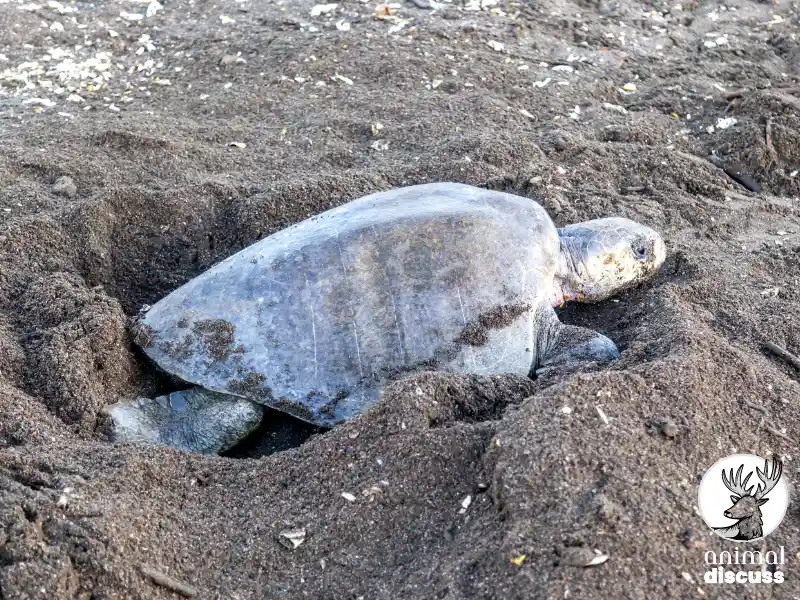
We knew earlier that the olive ridley sea turtle is the master of migration. Turtles that live in the ocean move from place to place in order to reproduce or find food.
Olive ridleys are very flexible in how they act in this situation. You can see them as nomadic marine migrants that eat on the surface or can see them staying near the coast and eating creatures that live in shallow water.
For this reason, they get a wider variety of food to forage that live at the bottom of the sea.
For more information about their behavior, you can read “Olive Ridley Sea Turtle Behavior”.
What Challenges Do Olive Ridley Sea Turtles Face?
Though these tiny little olive ridley sea turtles are abundant, still they face many problems that make it difficult for them to survive. Some of the obstacles they face throughout their lives are given below:
- Bycatching: Sea turtle bycatching is a worldwide problem. One of the biggest threats to them is to get caught in fishing gear. In this case most of the time they can drown and get hurt so badly that they become unable to move or die. This unintended capture is known as bycatch.
- Harvesting turtles and eggs: Turtle egg collection is the biggest threat. This is one of the reasons for the decline of the olive ridley sea turtle. Not only that, killing the female turtles on the nesting beaches for human consumption is also very common.
- Degradation and habitat loss: This includes using artificial lights on the sea beaches near to the nesting place of olive ridley sea turtles. The lighting here scares the female turtle and disrupts reproductive success.
- Predation: The consumption of eggs by natural predators; for example – birds, pigs, crabs and other mammals increases the predation risks. Along with that other animals like sharks are the primary predators of adult olive ridley.
- Ocean pollution: Nowadays plastic pollution has become a major threat. Most of the time turtles eat plastic bags assuming that its jellyfish. This leads them to gut blockage and ingestion.
Conservation Efforts Taken For Olive Ridley Sea Turtles
As now we know olive ridley sea turtles are facing a variety of challenges. In an urge to belittle their problems, some conservation efforts are being taken. Have a look at some of the initiatives.
Some programs like relocating nests for the hatcheries have worked. It is to protect olive ridley sea turtles from both human and natural predators is a great initiative.
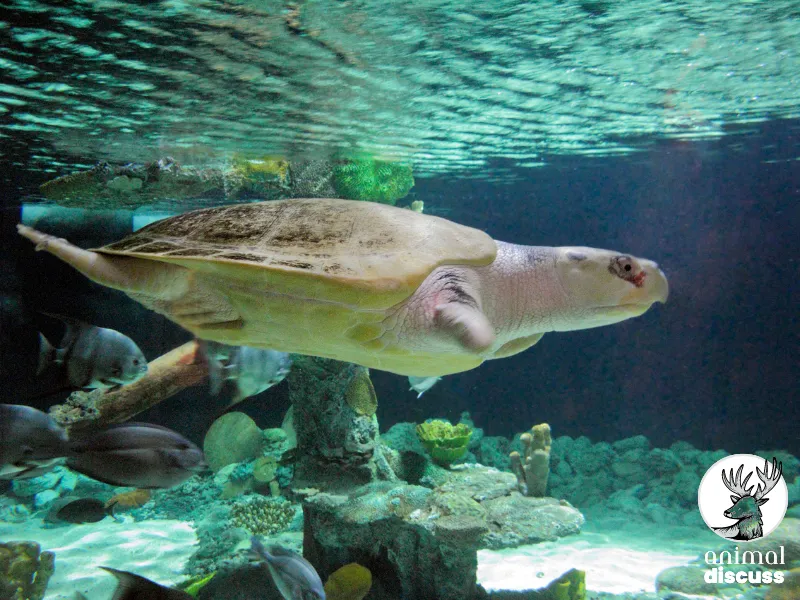
Also, creating awareness, such as teaching and reaching out to the people by making them aware is also being initiated. This highlights the importance of protecting sea turtles and assisting them with what they can do regarding this.
Again, gathering more information about the species’ ecology and biology is helping to improve conservation management plans. Furthermore, some communities like Brazil, Kenya, India, Mexico, and Colombia are taking part in conservation via NGOs.
Similarly, a legal community program of egg harvesting is taken by Costa Rica’s Ostional National Wildlife Refuge to ensure nesting population stability.
Accordingly, making changes in the fishing gear process or doing modifications to gear is also helpful. Like, using big circle hooks in fisheries and putting restrictions in some spaces can reduce bycatching.
Frequently Asked Questions
Now, all that you know about an olive ridley sea turtle, have a glance at some of the questions that readers ask.
01. Can you keep olive ridley sea turtles as pets?
The answer is no, olive ridley sea turtles are not recommended as pets because they need open space to survive. Moreover, keeping them as a pet is illegal because the owner will not be able to meet their all needs.
02. Can olive ridley sea turtles eat hard-shelled prey?
Yes, olive ridley sea turtles can indeed eat hard-shelled prey. Their jaws can easily crush and grind varieties of hard-shelled animals like shrimp, lobsters, crabs and sea urchins.
03. Who are the enemies of the Olive Ridley Sea turtle?
The hatched turtles most of the time are being preyed on before reaching the ocean. They are preyed on by raccoons, pigs, birds, and snakes. The adults are often eaten by the shark.
04. Why is it called the Ridley Sea turtle?
It is not clear what ‘Ridley’ refers to Olive Ridley Sea turtle. But it is assumed that it has something to do with the word ‘riddle’. That is because no one knows where the turtle’s nest came from. While other people say it could be an old name for a similar turtle.
Conclusion
Now that you dive into the world of olive ridley sea turtles, you have come to know the challenges they face. So, to ensure their survival you can use reusable shopping bags and water bottles.
As they are in a vulnerable state, the conservation efforts that are mentioned above if followed, the olive ridley sea turtle can be saved from extinction. I hope that this overview article has given you a total overview of this sea turtle.

